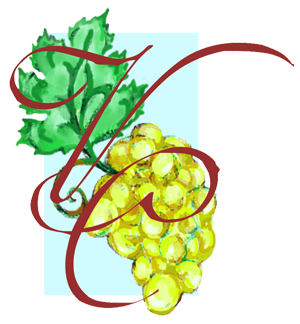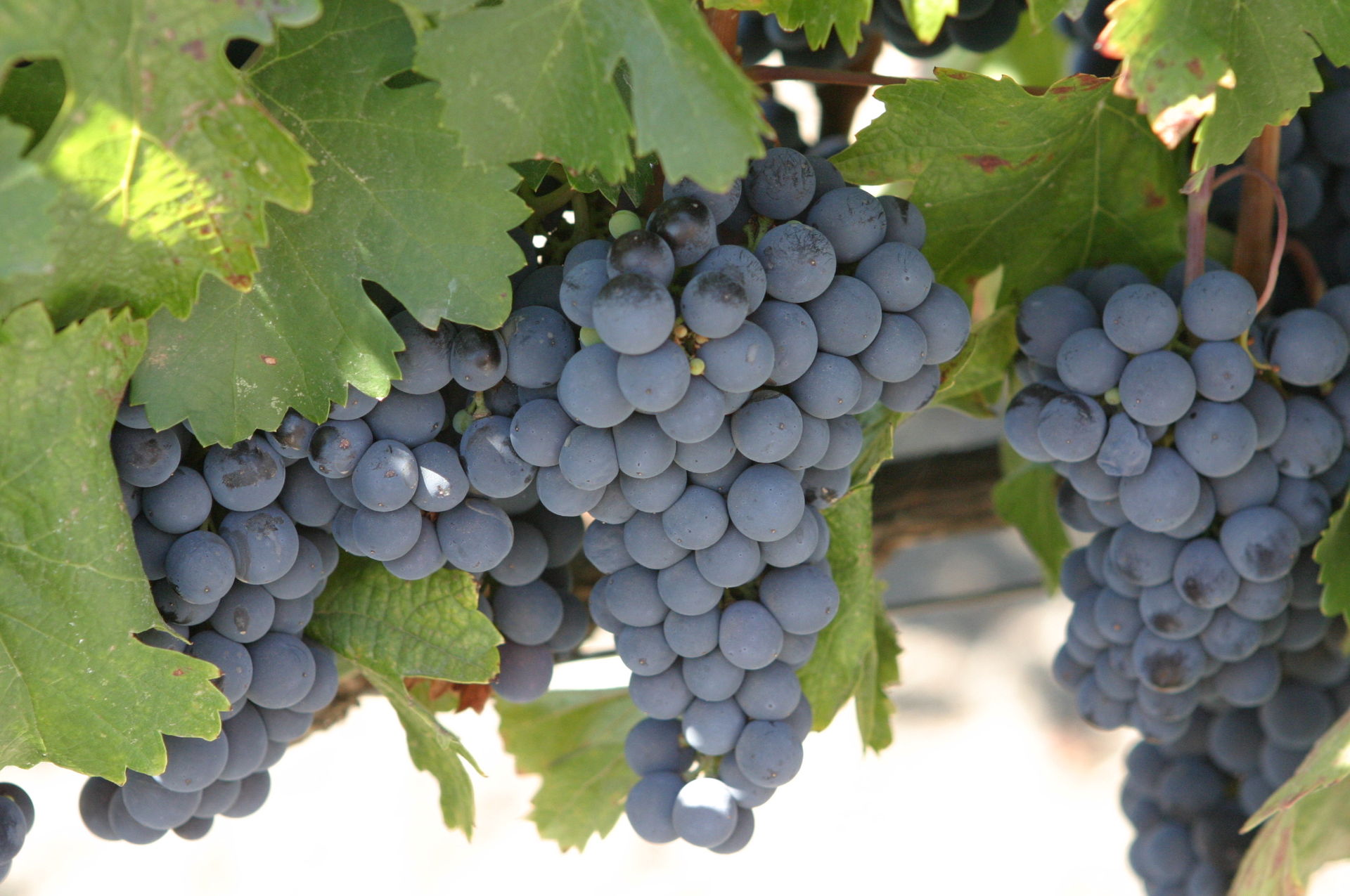Malbec (pronounced: [mal.bɛk]) is a purple grape variety used in making red wine. The grapes tend to have an inky dark color and robust tannins, and are known as one of the six grapes allowed in the blend of red Bordeaux wine. The French plantations of Malbec are now found primarily in Cahors in South West France. It is increasingly celebrated as an Argentine varietal wine and is being grown around the world.
Called Auxerrois or Côt Noir in Cahors, called Malbec in Bordeaux, and Pressac in other places, the grape became less popular in Bordeaux after 1956 when frost killed off 75% of the crop. Despite Cahors being hit by the same frost, which devastated the vineyards, Malbec was replanted and continued to be popular in that area where it was mixed with Merlot and Tannat to make dark, full-bodied wines, and more recently has been made into 100% Malbec varietal wines.[1]
A popular but unconfirmed theory claims that Malbec is named after a Hungarian peasant who first spread the grape variety throughout France.[2] However the French ampelographer and viticulturalist Pierre Galet notes that most evidence suggest that Côt was the variety's original name and that it probably originated in northern Burgundy.[3] Despite a similar name, the grape Malbec argenté is not Malbec, but rather a variety of the southwestern French grape Abouriou.[1] Due to the similarities in synonyms, Malbec has also been confused with Auxerrois blanc, which is an entirely different variety.[4]
The Malbec grape is a thin-skinned grape and needs more sun and heat than either Cabernet Sauvignon or Merlot to mature.[5] It ripens mid-season and can bring very deep color, ample tannin, and a particular plum-like flavor component to add complexity to claret blends. Sometimes, especially in its traditional growing regions, it is not trellised and cultivated as bush vines (the goblet system). Here it is sometimes kept to a relatively low yield of about 6 tons per hectare. The wines are rich, dark and juicy.[6]
As a varietal, Malbec creates a rather inky red (or violet), intense wine, so it is also commonly used in blends, such as with Merlot and Cabernet Sauvignon to create the red French Bordeaux claret blend. The grape is blended with Cabernet Franc and Gamay in some regions such as the Loire Valley.[4] Other wine regions use the grape to produce Bordeaux-style blends.[7] The varietal is sensitive to frost and has a proclivity to shatter or coulure.[6]
Viticulture
Malbec is very susceptible to various grape diseases and viticultural hazards—most notably frost, coulure, downey mildew and rot but the development of new clones and vineyard management techniques have helped control some of these potential problems.[3] When it is not afflicted with these various ailments, particularly coulure, it does have the potential to produce high yields. Too high a yield, as was the circumstance in Argentina until recently with their heavy use of flood irrigation, the wines become more simplistic and lacking in flavor. Malbec seems to be able to produce well in a variety of soil types but in the limestone based soils of Cahors it seems to produce its most dark and tannic manifestation.[1] There are distinct ampelographical differences in the clones of Malbec found in France and in Argentina, with Argentine Malbec tending to have smaller berries.[8]
A comparative research study conducted by the Catena Institute of Wine and University of California, Davis, examined the difference between the phenolic composition of Malbec wines from California, USA, and Mendoza, Argentina. Sixteen vineyards in California and twenty-six blocks in Mendoza were selected based on their uniformity and regional representativeness. The study concluded that there are distinct flavor and compositional differences in Malbec wines produced in Mendoza and California.[9]
Regions
Malbec is the dominant red varietal in Cahors where the Appellation Controlée regulations for Cahors require a minimum content of 70%.[6] Introduced to Argentina by French agricultural engineer Michel Pouget in 1868, Malbec is widely planted in Argentina producing a softer, less tannic-driven variety than the wines of Cahors. There were once 50,000 hectares planted with Malbec in Argentina; now there are 25,000 hectares in Mendoza in addition to production in La Rioja, Salta, San Juan, Catamarca and Buenos Aires. Chile has about 6,000 hectares planted, France 5,300 hectares and in the cooler regions of California just 45 hectares. In California the grape is used to make Meritage.[7] Malbec is also grown in Washington State, the Rogue and Umpqua regions of Oregon, Australia, New Zealand, South Africa, Brazil, British Columbia, the Long Island AVA of New York, Oregon, southern Bolivia, northeastern Italy and recently in Texas and southern Ontario, Virginia, and in the Baja California region of Mexico.




